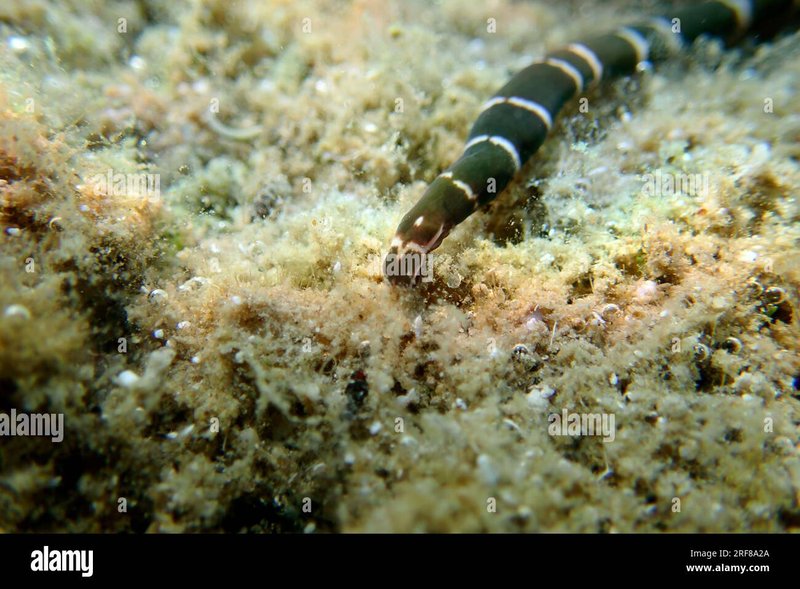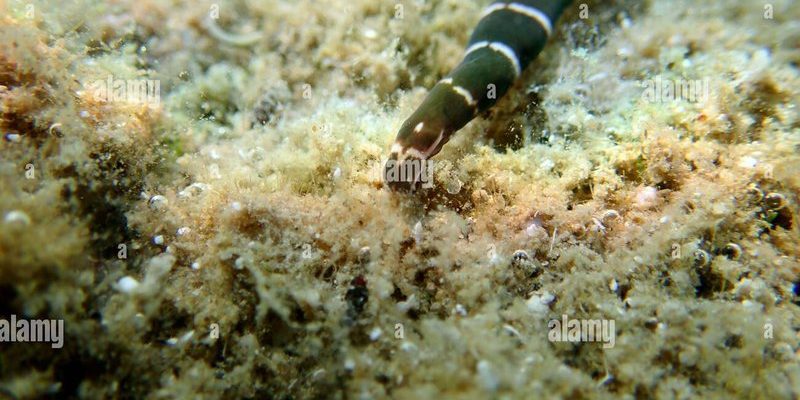
Bootlace worms belong to the *Lineus* genus, and they can grow to impressive lengths—some reaching over 30 meters! That’s longer than a bus! They’re typically found in cold waters, often nestled in the mud or sand of the ocean floor. So why should we care about these slippery animals? Well, they play a vital role in their ecosystems, contributing to nutrient cycling and serving as food for other marine animals. Let’s dive into the world of bootlace worms and explore their intriguing characteristics, habitats, and roles in cold-water marine ecosystems.
What Are Bootlace Worms?
Bootlace worms are part of a group known as nemerteans. They are characterized by their long, ribbon-like bodies, which are often brightly colored or patterned. These worms have a fascinating and complex body structure, including two main parts: the head and the trunk. The head isn’t just for show—it’s equipped with a retractable proboscis that helps them capture prey like small crustaceans and other tiny marine animals.
You might be wondering how these worms move around. Well, bootlace worms are quite the acrobats. They can slither across the ocean floor using a form of locomotion called peristalsis, where their muscles contract and relax in waves along their body. This way of moving allows them to explore their environments effectively, searching for food and hiding from predators.
Another interesting feature of bootlace worms is their remarkable ability to regenerate. If part of their body gets damaged, they can regrow it! This ability is not unique to bootlace worms, but it’s still impressive and highlights their resilience in harsh marine environments.
Where Do Bootlace Worms Live?
Bootlace worms thrive in cold-water environments, which is why they are commonly found in the North Atlantic and Arctic oceans. They prefer habitats like muddy bottoms, sand, and even rocky substrates. You might find them lurking in shallow waters, but many are also comfortable in the deeper parts of the ocean.
The unique adaptations of bootlace worms allow them to survive in these chilly waters. Their bodies have a special coating that helps to protect them from the cold, and they can tolerate varying levels of salinity and pressure. This adaptability is crucial in their survival, especially as climate change impacts marine ecosystems.
Interestingly, these worms can often be found in specific regions where other marine life flourishes. For instance, they might share their habitat with species like crabs, sea cucumbers, and various fish that rely on the rich sediment for food. In this way, bootlace worms contribute to the overall biodiversity of their ecosystems.
The Role of Bootlace Worms in the Ecosystem
Bootlace worms may not be the biggest creatures in the ocean, but their role in the ecosystem is significant. These worms are considered benthic organisms, meaning they live on or near the ocean floor. As they feed on organic matter—like decaying plants and other small creatures—they help break it down into smaller particles. This process is essential for nutrient cycling.
When bootlace worms consume organic material, they release nutrients back into the environment through their waste. These nutrients are vital for plants and smaller organisms in the ecosystem. Think of it as a recycling system that keeps the underwater world healthy and thriving. Without creatures like bootlace worms, the balance of marine life could be disrupted.
Additionally, these worms serve as a food source for various marine animals. Larger fish and even some seabirds feed on bootlace worms, making them an important link in the food chain. So, while they might seem small and insignificant at first glance, they play a crucial part in supporting marine life.
How Bootlace Worms Reproduce
Reproduction in bootlace worms is as fascinating as their other characteristics. These worms can reproduce both sexually and asexually. In sexual reproduction, they often have a complex mating ritual, where two worms exchange sperm. After fertilization, the worms can produce eggs that eventually hatch into tiny larvae.
In asexual reproduction, bootlace worms can regenerate lost body parts and, in some cases, can reproduce by simply splitting their bodies. This method allows them to increase their population quickly, especially in favorable environments. It’s a survival strategy that helps maintain their numbers in ecosystems where conditions can change rapidly.
Once the larvae hatch, they undergo a transformation, eventually settling on the ocean floor as juvenile bootlace worms. They then begin to grow and develop into adults, continuing the cycle of life that keeps the marine ecosystem balanced.
Threats Facing Bootlace Worms
Like many marine organisms, bootlace worms face various threats in their habitats. Climate change is one of the most significant concerns, as rising ocean temperatures can disrupt their breeding and feeding patterns. Warmer waters may also alter the ecosystems in which they thrive, making it harder for them to survive.
Pollution is another major threat. Contaminants and waste entering the ocean can affect the health of bootlace worms and their environments. Heavy metals and chemicals can accumulate in their bodies, potentially disrupting their reproductive systems and leading to population declines.
Overfishing and habitat destruction due to human activities also pose risks to bootlace worms. As fishing practices deplete fish populations and disturb the seafloor, the delicate balance of the marine ecosystem can be affected.
Why Should We Protect Bootlace Worms?
Protecting bootlace worms may not seem like a priority compared to larger, more charismatic marine species. However, here’s the thing: every creature, no matter how small, plays a role in the intricate web of life in the ocean. By conserving bootlace worms and their habitats, we help maintain the overall health of marine ecosystems.
Healthy ecosystems support diverse marine life, which is essential for human well-being too. Many coastal communities depend on fisheries for their livelihoods, and ensuring that the entire food web remains intact is crucial. Protecting bootlace worms contributes to a more sustainable and balanced marine environment.
Also, studying these worms provides valuable insights into marine biology and ecology. Understanding how they interact with their surroundings can help scientists develop strategies to protect and conserve our oceans more effectively.
In summary, bootlace worms are fascinating creatures that play vital roles in cold-water marine ecosystems. Their unique adaptations, contributions to nutrient cycling, and essential place in the food chain make them worthy of our attention and protection.
As we navigate the complexities of marine conservation, let’s remember that even the smallest organisms, like bootlace worms, matter in the grand scheme of our oceans. By taking steps to protect the marine environment, we ensure a healthier future for all its inhabitants.

